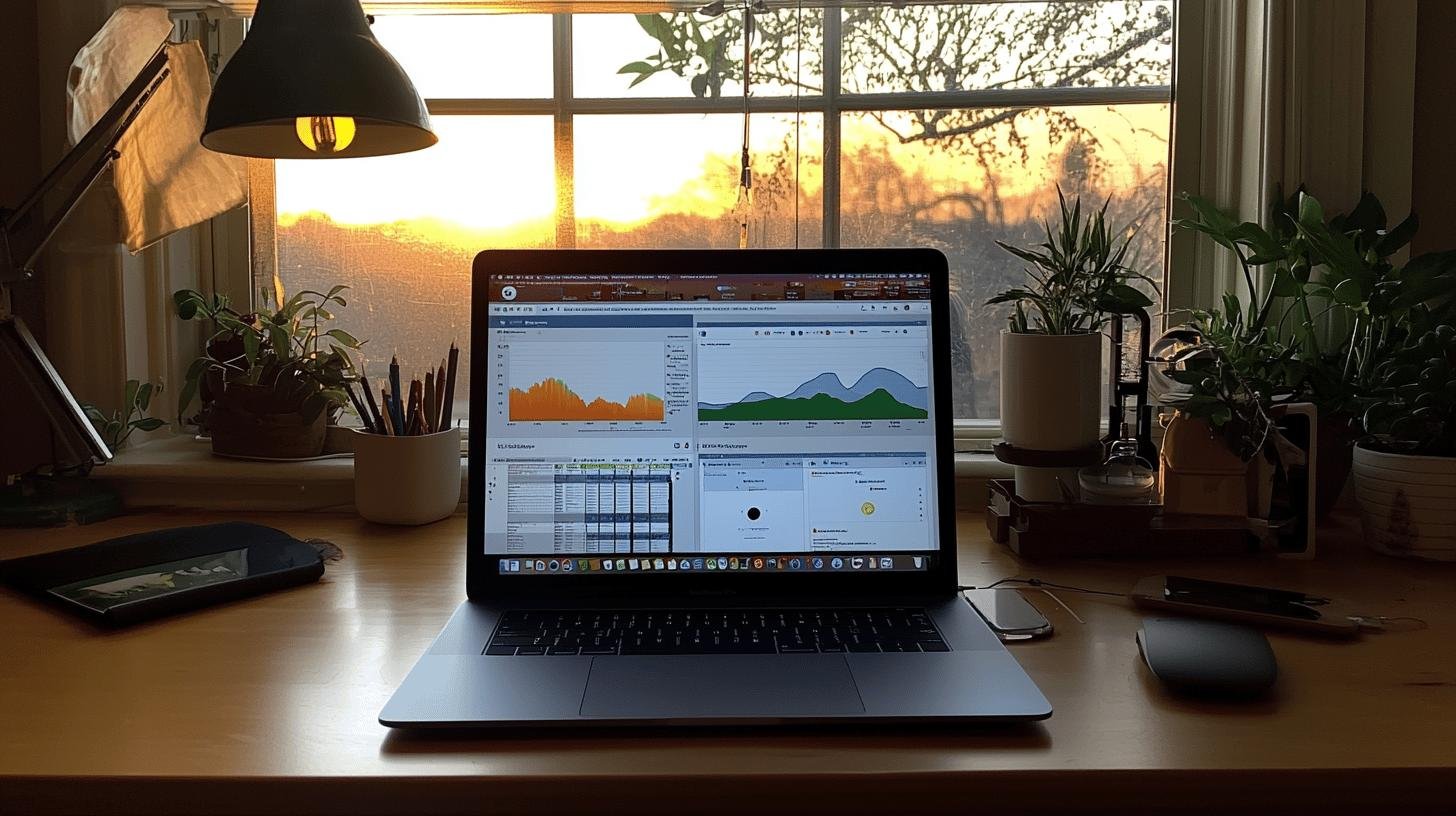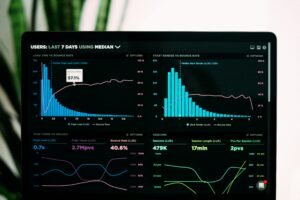Ever felt like you’re throwing spaghetti at the wall with social media campaigns? Let’s cut through the noise and get down to business: measuring success isn’t just about likes and shares. It’s about setting clear goals and knowing what to track. With the right tools and a plan, you can turn that digital spaghetti into a masterpiece. Stick around and I’ll show you how to measure social media campaigns by setting SMART goals and nailing your KPIs. Ready to level up your social game? Keep reading!
How to Measure Social Media Campaign – Setting Clear Goals
Why set goals for making noise online? Without knowing where you’re going, how will you know when you’ve arrived? Goals are like your campaign’s GPS. They guide every post, tweet, or video toward a specific aim. Without clear goals, measuring success is tough. You risk wasting time and money on unhelpful efforts. Goals focus you on what matters and help track success effectively.
SMART goals are your campaign’s best friends. SMART means Specific, Measurable, Achievable, Relevant, and Time-bound. Your goals should be clear, like boosting Instagram followers by 20% in three months. They need to be measurable so you can track progress. Achievable goals keep you realistic—no aiming for a million followers overnight! They must be relevant, align with business objectives, and have a deadline to maintain momentum.
Specific Goals for Social Media Campaigns:
- Reach 10,000 new users to boost brand awareness
- Generate 500 new leads via a Facebook ad campaign
- Increase website traffic by 30% using Instagram Stories
- Improve engagement rates by 15% on Twitter
- Gain 1,000 new TikTok followers in two months
Key Performance Indicators on How to Measure Social Media Campaigns

What are KPIs, and why do they matter? Think of Key Performance Indicators as scorecards for your social media campaigns. They reveal if you’re succeeding or need a strategy rethink. Without KPIs, you’re essentially flying blind—a bit like playing a game without knowing the rules or score. KPIs provide data to evaluate campaigns, showing what’s working and what needs attention. It’s about making data-driven decisions instead of relying purely on intuition.
Let’s explore some KPIs to track. Engagement rates show the love your posts receive through likes, shares, and comments. Website traffic indicates if posts bring people to your site. Conversions reveal how many took actions like signing up for a newsletter or purchasing. Each metric offers insights to enhance results.
4 Widely Used Social Media KPIs:
- Engagement rates: Likes, comments, and shares
- Website traffic: Visits from social media
- Conversions: Actions like sign-ups or purchases
- Reach: Number of unique users who saw your content
Tools for Measuring Social Media Campaign Effectiveness
How to measure social media campaigns – Why are tools vital for tracking social media campaigns? Imagine baking without measuring cups—you might get a cake or a mess. Measuring social media effectiveness requires precision. Tools are your digital measuring cups. They help collect and analyze data, revealing what’s working and what’s not. Without them, you’re guessing how your audience interacts. These tools identify trends, adjust tactics, and save time and money by focusing on effectiveness.
Let’s look at some top tools for measuring social media success. Google Analytics tracks website traffic and conversions, offering insights into how posts drive site visits. Facebook Insights provides vast data on engagement and audience demographics. Meltwater focuses on long-term brand growth, showing how your brand evolves. Hootsuite manages social media scheduling, analytics, and monitoring. Each tool offers unique insights, giving you a comprehensive view of your campaign’s performance.
Analyzing Social Media Metrics: Engagement, Reach, and Conversions

Are your social media posts getting the attention they deserve? Engagement metrics are key indicators. They’re the high-fives and fist bumps of the digital world. Likes, shares, comments, or mentions show that people connect with your content. These interactions mean your audience is not just scrolling by but stopping to react. Higher engagement suggests your content resonates, leading to a loyal fan base. Pay attention to these metrics—they reveal a lot about your audience’s tastes.
Next, let’s discuss reach and impressions. They aren’t twins but more like cousins. Reach counts unique users who saw your content, like different people who received your flyer. Impressions count views, whether it’s one person seeing it multiple times. Reach shows your potential audience size, while impressions show content frequency and exposure. Tracking both helps plan your next steps effectively.
Conversion rates are crucial success measures. They show how many people acted as you wanted, like signing up or making a purchase. Calculate it by dividing conversions by total visitors, then multiply by 100. High conversion rates mean your content draws attention and drives action. Conversions play a key role in assessing your campaign’s real impact on business goals.
- Engagement Rates: Measures likes, shares, comments, and mentions.
- Reach: Number of unique users who saw your content.
- Impressions: Total views, including multiple views by the same users.
- Conversion Rates: Percentage of visitors taking a desired action.
How to Measure Social Media Campaign Success – Reporting and Refining
Why is regular reporting a game-changer for social media campaigns? It acts as a roadmap, showing past paths and future directions. Effective reporting helps understand long-term performance and growth. A good report covers key metrics like engagement rates, reach, conversions, and ROI. These metrics reveal successful and needing-improvement campaign parts. Monitoring these figures allows informed strategy decisions.
Now, let’s refine strategies. Analyze your data and take action. Refining strategies based on insights is crucial for maximizing social media ROI. Adjust goals, content, or platforms based on success and failure. It’s about learning and evolving. The more you refine, the better your campaigns perform. Remember, it’s a continuous improvement cycle—analyze, refine, repeat.
- Set clear benchmarks: Use past data for realistic goals.
- Focus on what works: Amplify successful tactics.
- Keep experimenting: Try new ideas to keep strategies fresh.
Conclusion
How to measure social media campaign success – Setting clear goals right from the start makes all the difference. SMART goals make measuring success a breeze, helping you see what works. With the right KPIs tucked under your belt, like engagement rates and conversions, keeping track gets easier.
There’s a treasure trove of tools—like Google Analytics and Facebook Insights—that crank out the data you need. Analyzing metrics such as reach and engagement lays the road map for refining your strategy. Mastering how to measure a social media campaign will set you on the path to success. Keep at it, and your campaigns will only get better!
FAQ
How are social media campaigns measured?
To measure social media campaigns, set clear SMART goals and track KPIs. Use analytics tools like Google Analytics and Facebook Insights for data on engagement, reach, and conversions.
How to evaluate a media campaign?
Evaluate a media campaign by reviewing KPIs such as engagement rates, traffic, and conversions. Compare these results against your initial goals to assess success.
How to track social media campaigns?
Track social media campaigns using analytics tools. Google Analytics can help monitor website traffic, while Facebook Insights offers data on post engagement and user demographics.
How to measure social media engagement?
Measure social media engagement by analyzing metrics like likes, shares, comments, and mentions. These indicators reflect how actively your audience interacts with your content.
How to monitor a social media campaign?
Monitor a social media campaign by regularly checking performance metrics. Use dashboards and reports from tools like Meltwater for ongoing updates.




